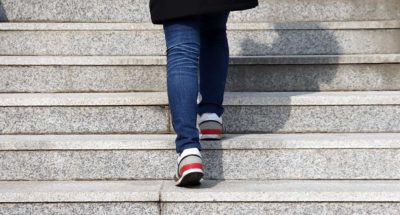
Mindful Walking for Adults
Cultivate calmness by becoming aware of your body as you walk, feeling the sensations of slow and deliberate movement.

Cultivate calmness by becoming aware of your body as you walk, feeling the sensations of slow and deliberate movement.
You will:
Adapted from a guided walking meditation led by mindfulness expert Jon Kabat-Zinn. This and other guided meditations can be found in his audiobook, Mindfulness Meditation in Everyday Life.
Walking meditation, a key practice featured in Jon Kabat-Zinn’s Mindfulness-based Stress Reduction (MBSR) program, is a widely used method for cultivating mindfulness. In addition to increasing mindfulness more generally, this practice can promote awareness both of our internal sensations, our physical bodies, and our external surroundings, tuning us into experiences that we often miss when we move through our day on autopilot.
MBSR, which has been adapted and studied over the last several decades, includes other practices like the body scan, mindful yoga, and mindful breathing. Research tells us that these practices help people to manage chronic pain, stress, anxiety, and symptoms of distress.
In fact, teachers who practice mindfulness for just a few weeks report a range of positive outcomes, including a decrease in burnout, stress, anxiety, and depression. They also experience a range of physical health benefits, including better sleep quality.
At school, much of our time is spent rushing—preoccupied with our next activity or class that we don’t really notice what we’re doing now. As we increase our sensory and mental awareness, mindfulness can help us to navigate our thoughts, feelings, and behaviors at school and at home so that we ultimately respond more constructively to others. Teachers who practice mindfulness report reduced interpersonal problems and more emotionally supportive relationships with the students in their classrooms.

Do you want to dive deeper into the science behind our GGIE practices? Enroll in one of our online courses for educators!
Comments